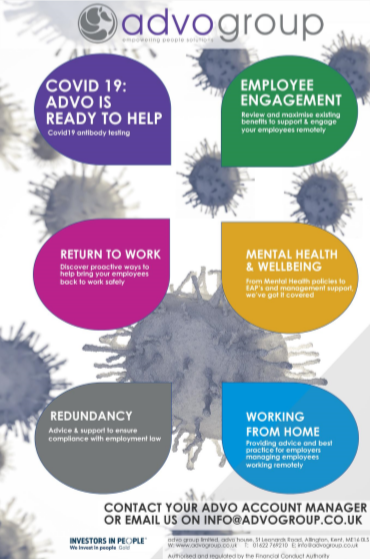The end of October marks the closure of the Coronavirus Job Retention Scheme. We look at the next steps employers should consider when working out what their businesses will look like and their staffing requirements.
The UK government recently announced the Job Support Scheme and although full details have not yet been published, we provide you with an overview of this scheme, which is expected to launch on 1 November 2020.
We are aware that some of our clients have utilised the government’s Coronavirus Job Retention Scheme (CJRS). From 01 October 2020, there will be a further reduction with the government’s contribution reducing to 60% and capped at £1,875, with employers needing to top this amount up to 80% (capped at £2,500 or more if that has been agreed with the employee) and continue to pay any employer National Insurance and pension contributions.
The scheme ceases on 31 October 2020 but what happens then? We urge any of our clients currently using the CJRS to consider, if you haven’t already, what your business will look like in November and into the future. If you require any payroll support with furlough calculations, please do get in touch. As an advo payroll client, our team would be happy to talk to you about the support they could provide you.
If Employee can return from Furlough
If the business is in a position where there is now enough work for the furloughed employee(s) to begin working again, the following should be considered:
- Do you require them to work from home? If so, have you ensured a risk-assessment has been undertaken and that they have all the equipment they need to work from home? Have you ensured they are up to speed, understand what is expected from them and that as a business you are there to support them? Has the return to work been mutually agreed?;
- Do you require the employee to return to the office? If so, have you had a conversation with them regarding this? Is the only place the role can be carried out in the office? Is the office sufficiently safe? Has the return to the workplace been mutually agreed?
Either way we would advise writing to confirm that they are no longer on furlough and the details of the agreed return to work.
If changes need to be made post-CJRS
There are many things that employers need to consider before the CJRS comes to an end. Ultimately, as an employer, you will need to ensure you have considered what your business will look like which will mean spending time:
- Analysing upcoming projects and income streams. There is also the government’s Job Retention Bonus which will be a one-off payment of £1,000 to UK employers for every furloughed employee who remains continuously employed through to the end of January 2021 and meet eligibility criteria which may need to be factored into to any financial plans;
- Ensuring that all arrangements have been made to ensure the workplace is Covid-secure if there is a need to return to office and that employees are happy to return to the office;
- Assessing the level of staffing required and what that may look like.
There are many options that are available to employers if it is not possible to bring furloughed employees back on their usual working patterns:
- Agreements over unpaid sabbaticals or other time off whilst remaining employed and preserving the continuity of employment;
- Reduced hours or reduced working weeks (by agreement between employer and employee). For instance, employees may agree to a four-day working week or to work five hours per day rather than the slightly longer working day for reduced pay;
- Recruitment freezes;
- Overtime bans;
- Salary reductions (with employee agreement);
- Creating your own Company version of the CJRS fully funded by the employer. This would need employee agreement as the employer will have to negotiate an agreed change to the contracts. Depending on the number of employees involved it may require collective representatives or a union as well as obtaining individual agreement to the private furlough arrangement;
- Redundancies which should always be a last resort when all of the above have been considered and justifiably ruled out by an employer.
If you find yourself considering what to do next or are contemplating any of the above options and would like to discuss with us, please do get in touch. We are here to help you through these difficult times.
Job Support Scheme
To support viable UK employers who face lower demand due to COVID-19, and to keep their employees attached to the workforce, the government will be introducing a new Job Support Scheme from 1 November 2020.
Employees will need to work a minimum of 33% of their usual hours. For every hour not worked the employer and the government will each pay one third of the employee’s usual pay, and the government contribution will be capped at £697.92 per month. Employees using the scheme will receive at least 77% of their pay, where the government contribution has not been capped.
The employer will be reimbursed in arrears for the government contribution.
Please note that the employee must not be on a redundancy notice. The scheme will run for six months from 1 November 2020 and is open to all employers with a UK bank account and a UK PAYE scheme.
You can find out more information here.



